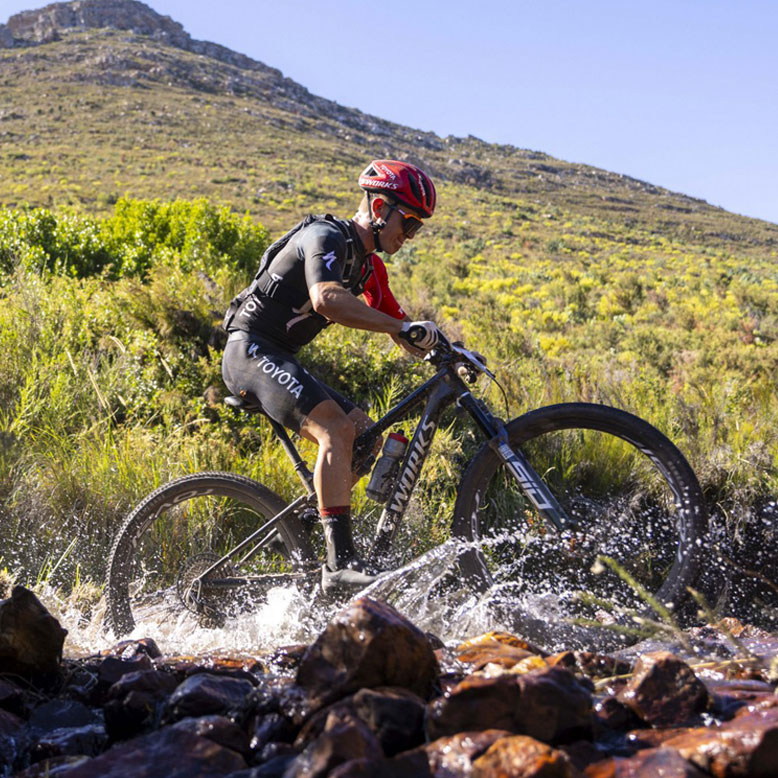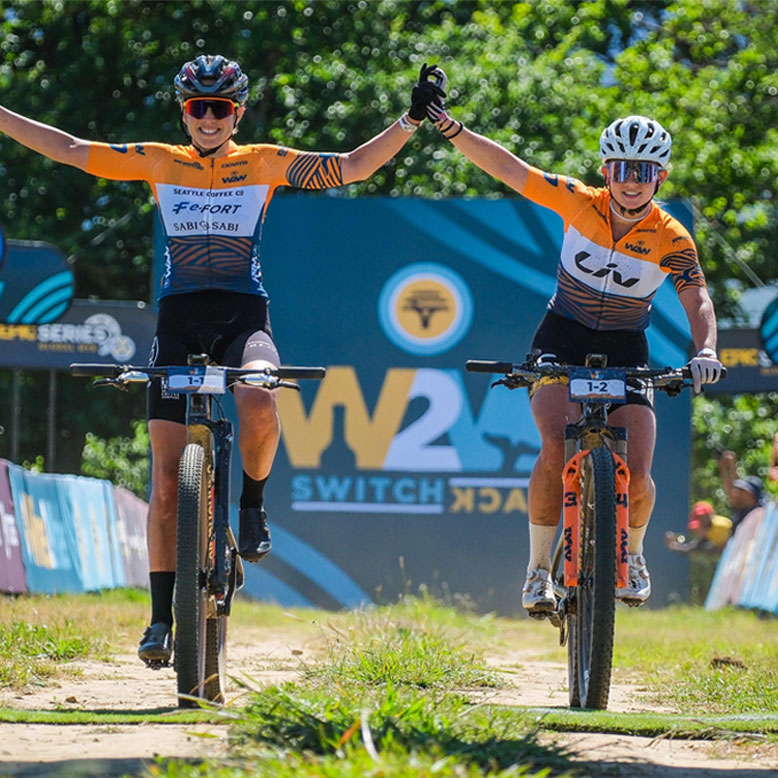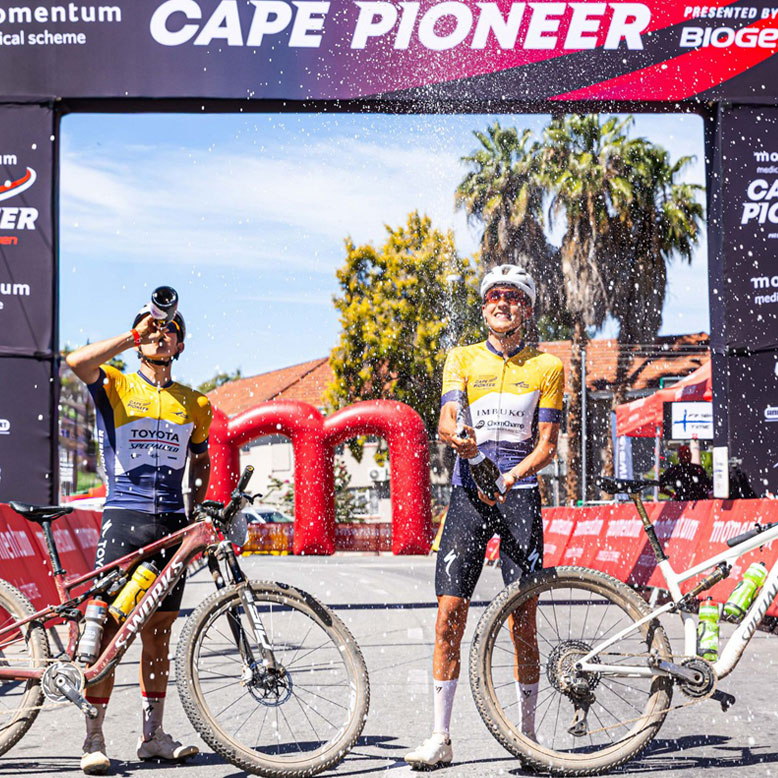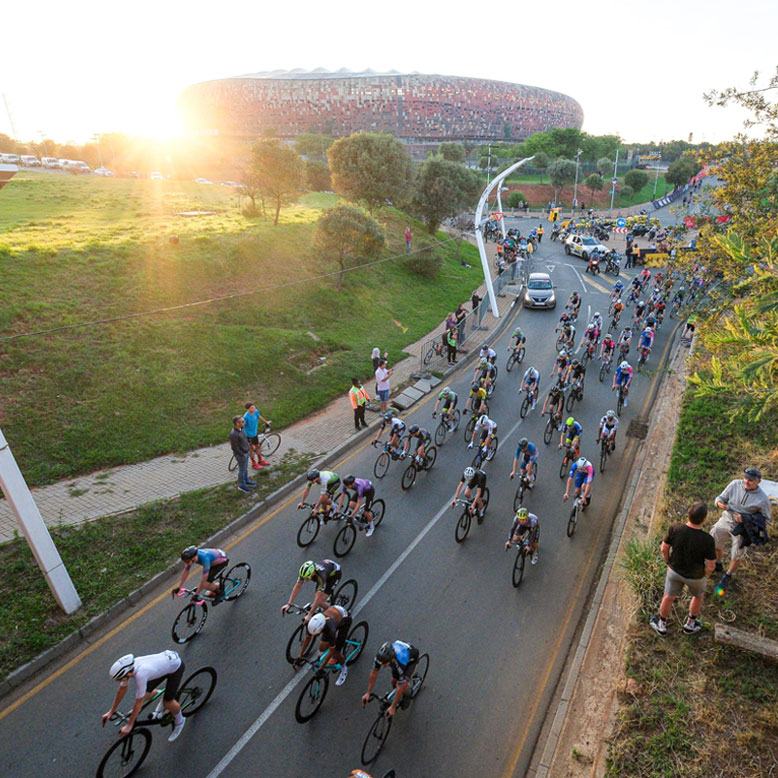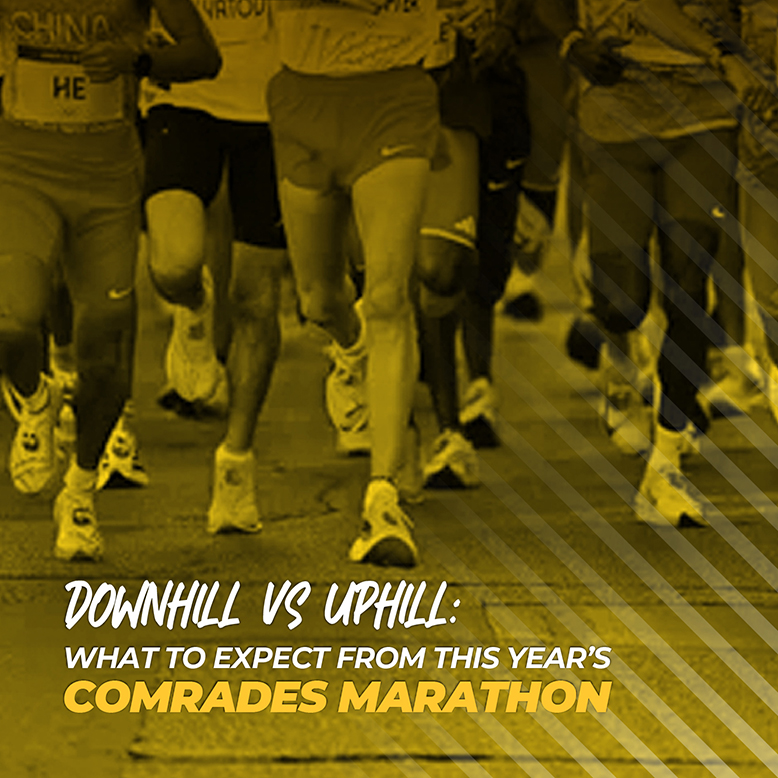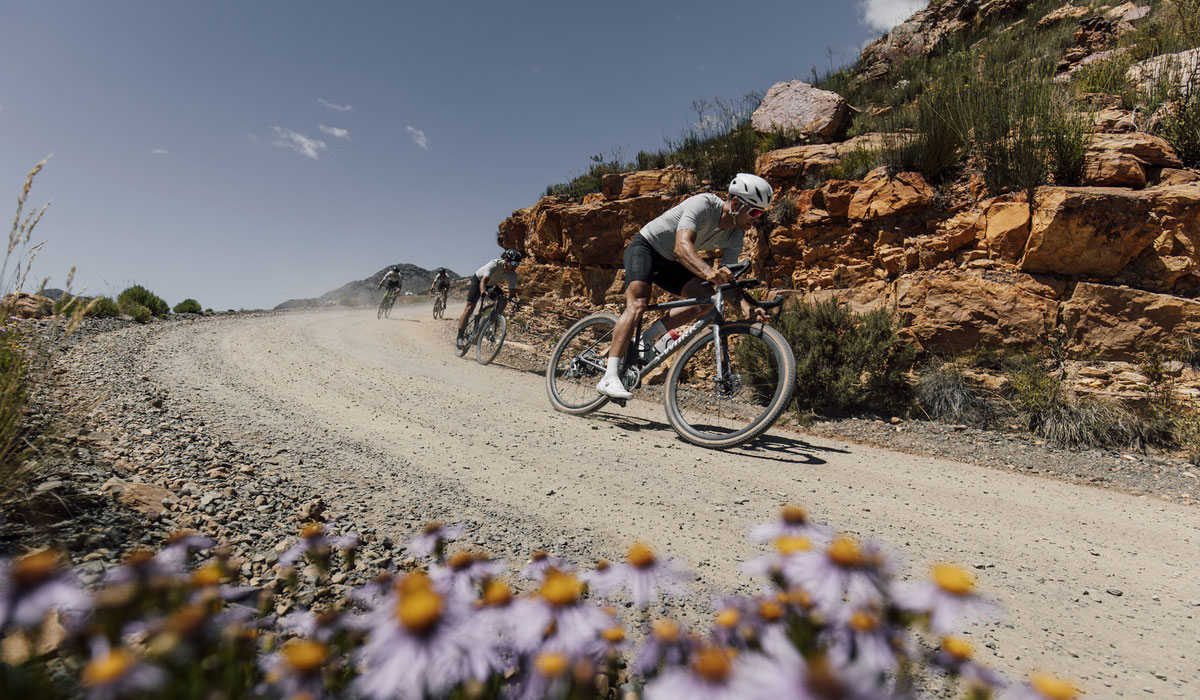
The back roads of the Western Cape are a gravel racer’s dream playground. Photo by Shift Media Co.
Gravel is in vogue. It is growing and evolving, with stage racing already identified as the next frontier.
The question which now needs to be answered is how many elements from road and mountain bike stage racing multi-day gravel events will incorporate, and where they will deviate entirely. The Garden Route Giro’s race director, Henco Rademeyer, considered elements from both these disciplines in devising the inaugural course and was heavily influenced by a pioneer from South Africa’s industrious past.
“We want to showcase the diversity of the Garden Route in the six days of Garden Route Giro racing,” Rademeyer reflected. “From hosting mountain bike events in the region, we knew which key features resonate with riders. The potential to bring in longer asphalt stretches, over passes or through poorts (the Afrikaans term for a road along the banks of a river, through a narrow valley), excites us tremendously too. It really allows for a fuller showcasing of beautiful features.”
As is the case with many passes in the Western Cape most of the best features of the 2026 Garden Route Giro course will carry the lasting legacy of Thomas Bain. Of the six major passes or poorts on the route, five were built by South Africa’s most famous road engineer. The Garcia-, Swartberg-, Prince Alfred’s- and Seven- Passes are all works of Thomas Bain, while Meiring’s Poort was refined by the man whose father, Andrew Geddes Bain, is the country’s next most renowned road builder.
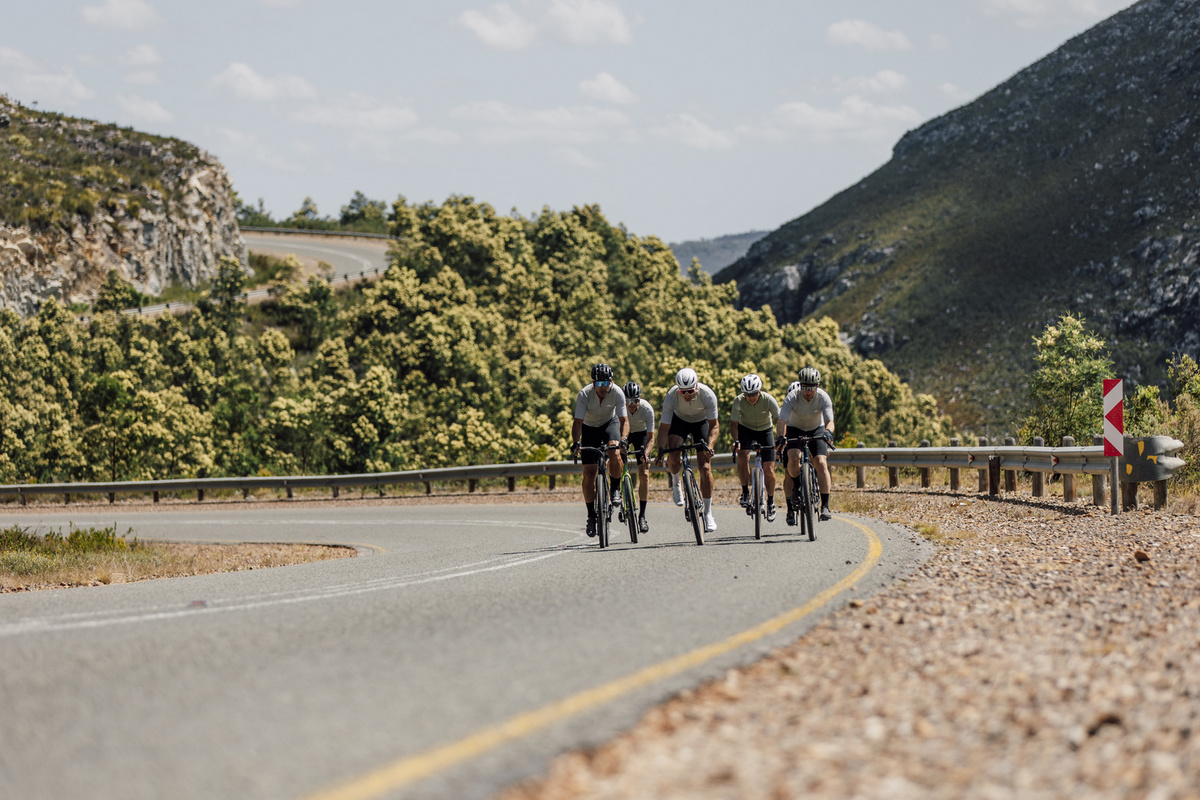
Garcia Pass, over the Langeberg Mountains, is the only all-tar pass of the 2026 Garden Route Giro course. Photo by Shift Media Co.
Garcia Pass
Linking the coastal plane with the Klein Karoo to the north, Gacia Pass is a tarmac road which gains 400 metres in elevation. It features dairy farms and emerald green fields at its southern starting point, and ends in the arid shrublands of the Klein Karoo. It crosses the Langeberg Mountain range in a saddle, below Sleeping Beauty a formation with the profile resembling the lead character of the fairy tale.
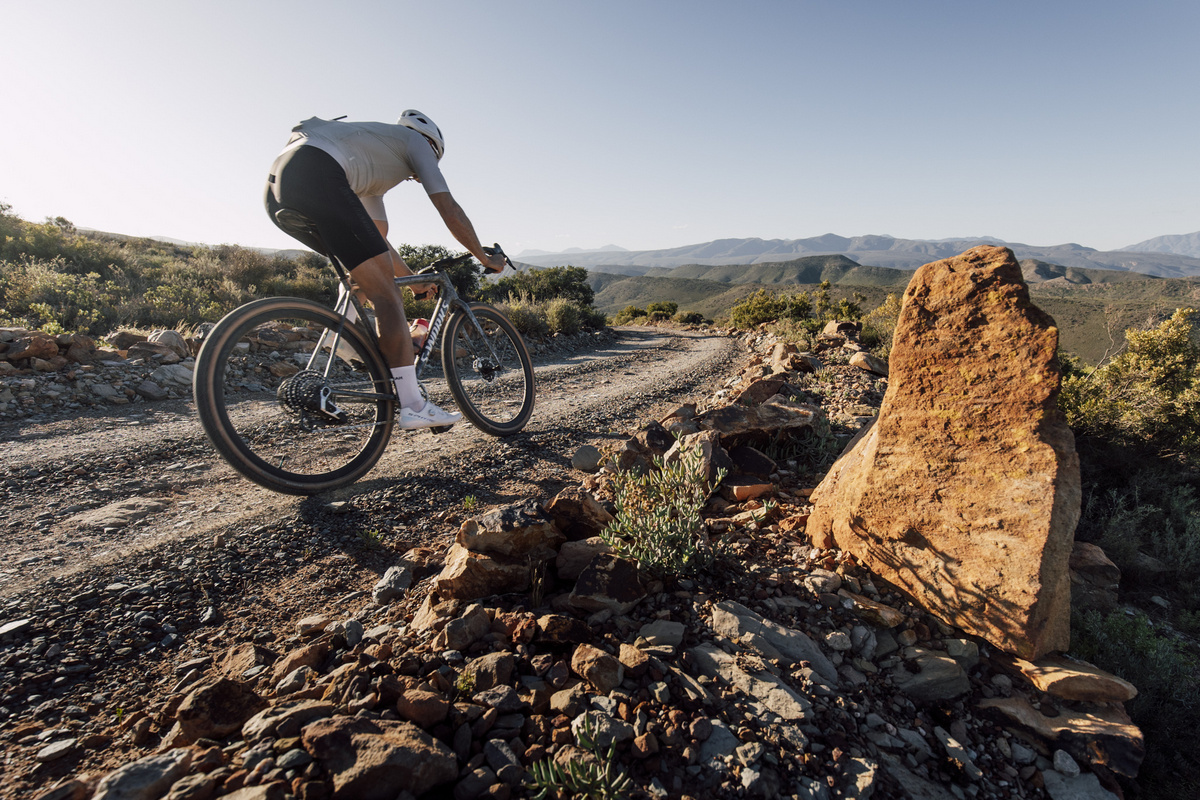
Rooiberg Pass is rugged and beautiful, descending it at speed will push gravel racers to the limit of their skills, or force them to back off and descend with caution. Photo by Shift Media Co.
Rooiberg Pass
The only pass on the 2025 Garden Route Giro course which was not designed or renewed by Thomas Bain, the Rooiberg Pass connects Calitzdorp in the north with Van Wyksdorp in the south. Before the formal pass was completed in 1928 the congregations from each of the towns would meet at the summit, weekly, while escorting the Dutch Reform Church minister they shared across the mountains. They placed a stone on the cairn at the highest point, before turning around and descending towards their respective home towns. The impressive size of the pile highlights how overdue the building of Rooiberg Pass was, after more than a century of weekly crossings by horseback.
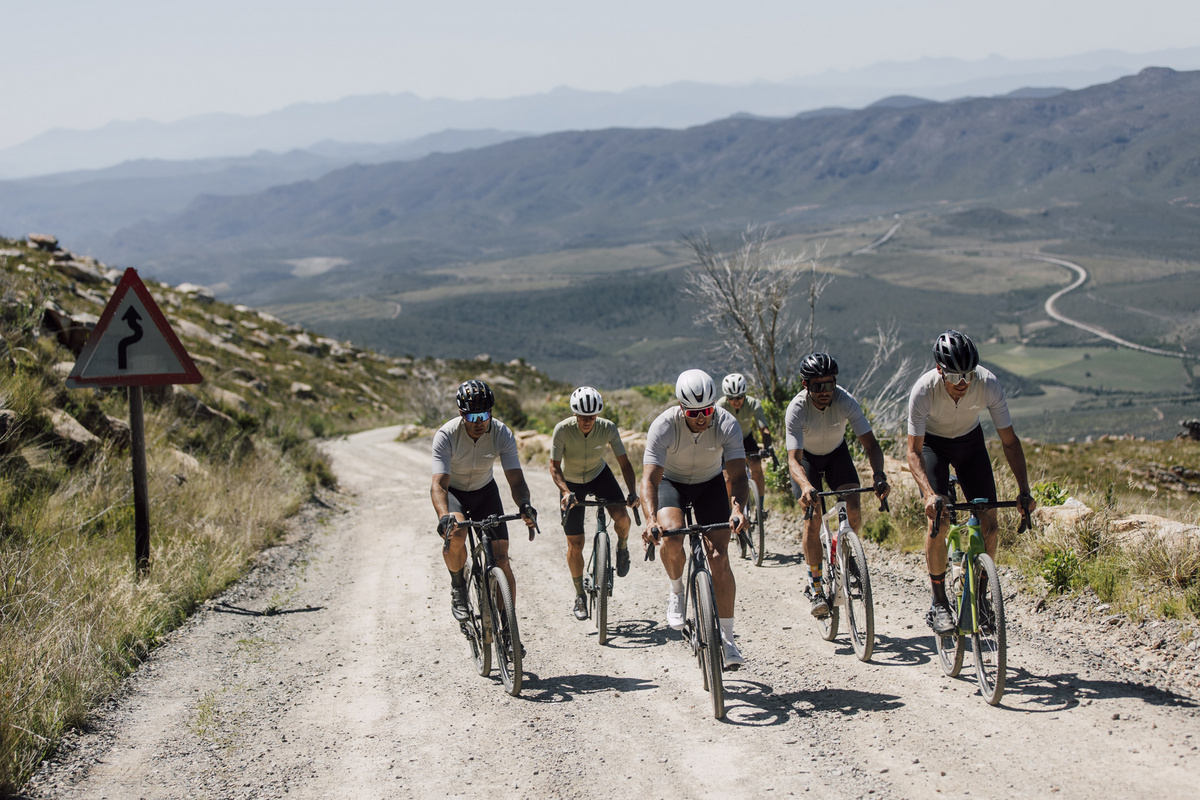
Swartberg Pass provides the highest point of the race, at 1 580 metres above sea level. Photo by Shift Media Co.
Swartberg Pass
Along with Prince Alfred’s Pass, Swartberg Pass is arguably Bain’s greatest work. It features splendid examples of the dry-pack stone walling which he used to support the road surface as it traversed valleys within the mountain side. From the south the pass requires riders to conquer 800 metres of climbing to the summit, at Die Top, 1 580 metres above sea level. A spectacular descent follows, to Prince Albert, with winding switchbacks hugging the near sheer northern face of the Swartberg Mountains.
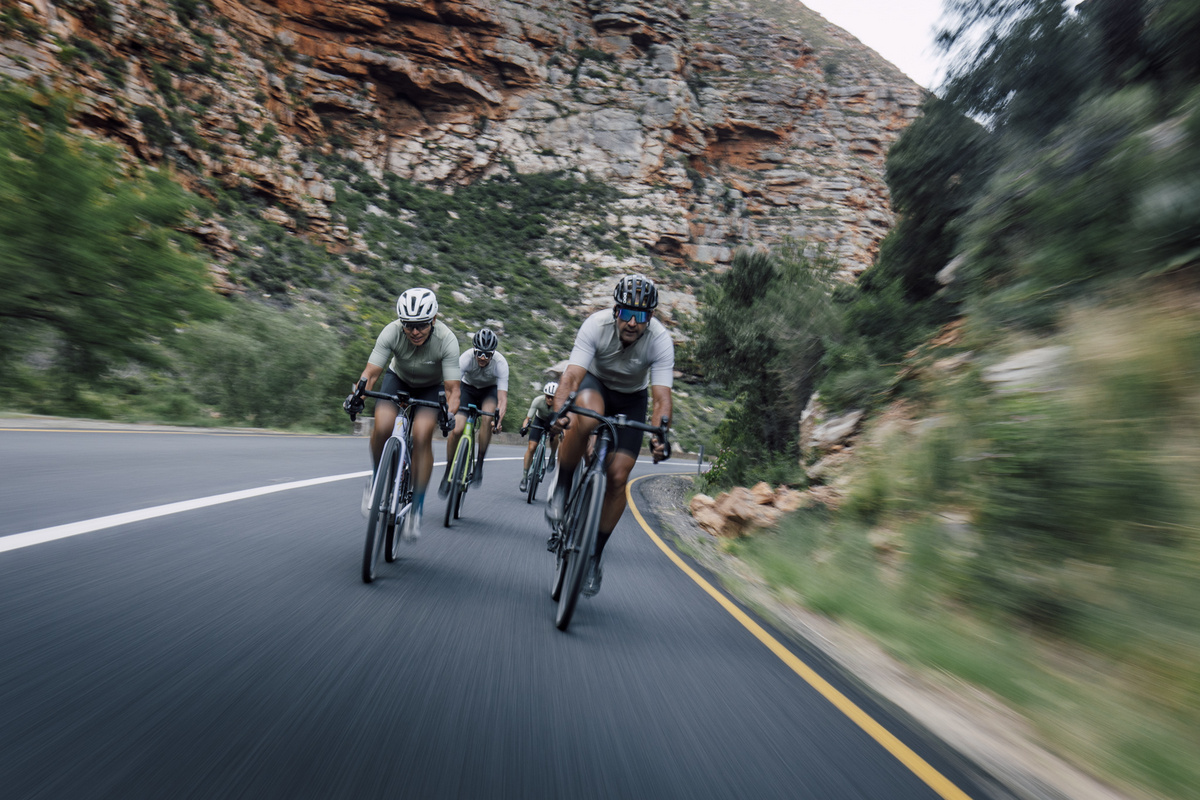
Meiring’s Poort provides spectacular insights into the geological forces which shaped the Cape Fold Mountains. Photo by Shift Media Co.
Meiring’s Poort
The Poort had a road through it already when the Bains was called upon to solve the problems caused by repeated flooding of the Grootrivier (the Big River). Thomas was just 26 at the time when construction of the road began and the stone splitting technique his father, Andrew Geddes, developed during the building of Meiring’s Poort would prove invaluable over the coming decades. The track the road replaced crossed the river more frequently than the Bains’ design does, but its 25 crossings in 25 kilometres is still significant. Where the passes of the Garden Route Giro provide spectacular vistas due to their elevation, the appeal of the poort is the red rock formations of the narrow canyon it follows. The dramatic folds of sandstone turn every traveller through Meiring’s Poort into an avid geologist for, at least, the duration of the trip.
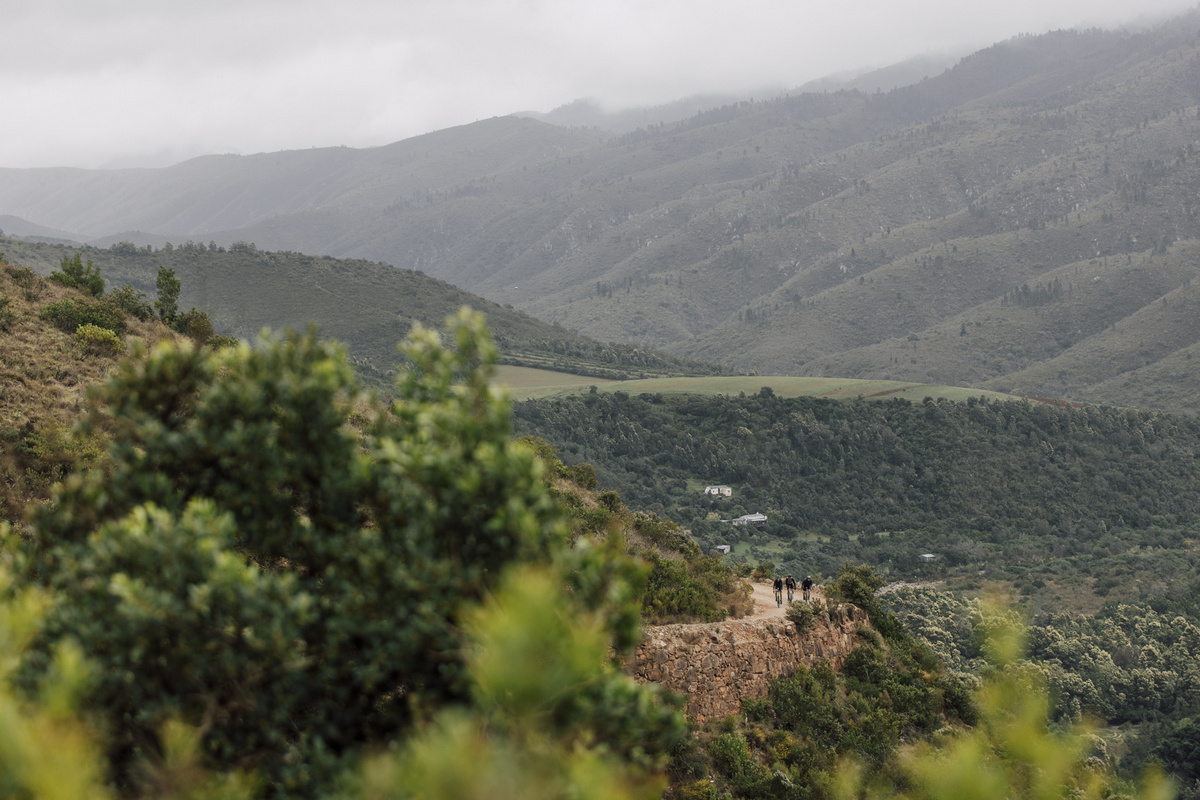
Prince Alfred’s Pass is the longest all-gravel pass in the country and showcases the dry-packed stone walls which are a hallmark of Thomas Bain’s work. Photo by Shift Media Co.
Prince Alfred’s Pass
South Africa’s longest gravel pass might not reach the heights, above sea level, of Swartberg Pass but it more than makes up in terms of the landscape it crosses. Starting in the Langkloof’s orchards it traverses the Outeniqua Mountains in a southerly direction, crossing through sections of mountain fynbos, pine plantations, and Afromontane indigenous forest. The southern reaches of the pass include the habitat of what is said to be the last remaining Knysna forest elephant. This secretive matriarch is rarely spotted, but occasionally her footprints or dung can be found on the final Kom se Pad section of the pass. The deep forest develops its own microclimate too and rain is never far off. In the mist it is not hard to believe the stories, told by remote forest dwellers, that Strangefoot is not the only mystical beast wondering the woods. There are tales of an African cryptid too, a bigfoot like hominid dubbed the Otang…
Check out this video released by SANParks of Strangefoot in the Knysna Forest.
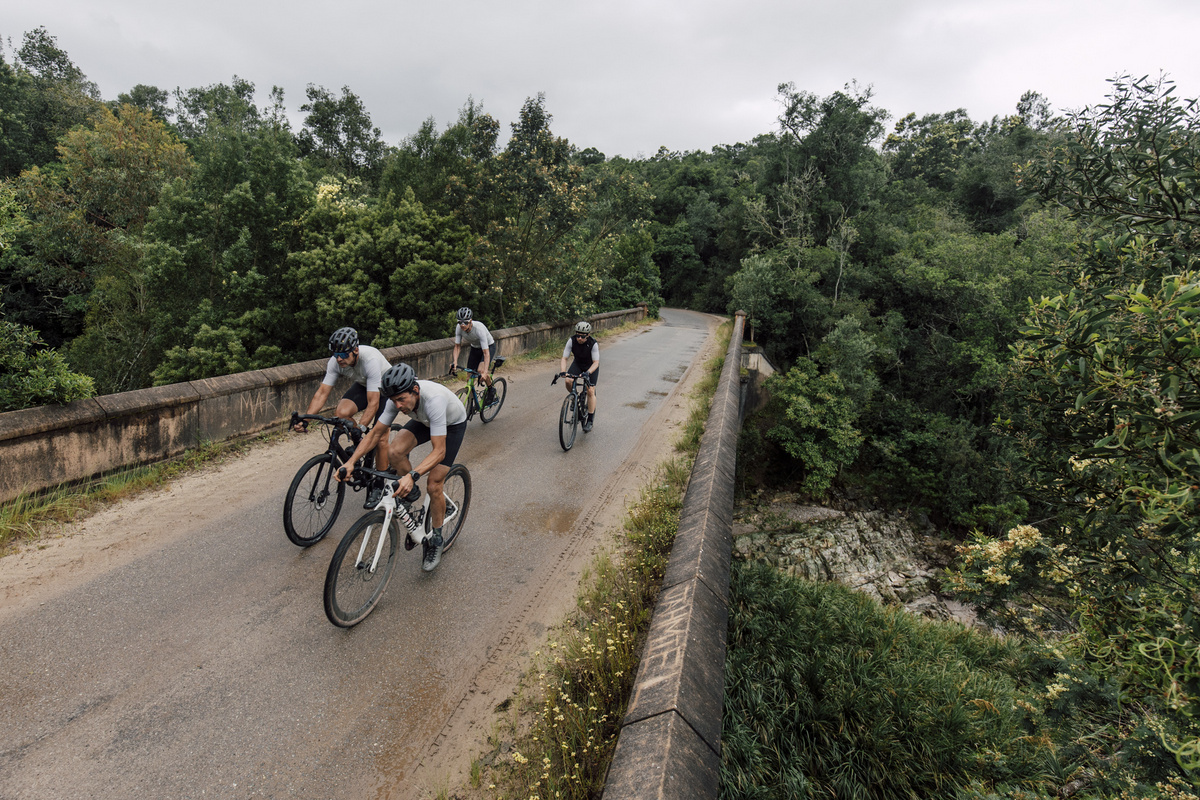
The Seven Passes Road descends from the coastal plateau to deep river gorges crossing rivers like the Witels, Goukamma, and Kaaimans. Photo by Shift Media Co.
Seven Passes
The final pass of the 2026 route is a series of drops and rises from the Knysna/George coastal plateau to the rivers which, over the millennia, carved deep gorges into the landscape. The individual challenges include Phantom-, Homtini-, Ruigtevlei-, and Karatara- Passes. Due to the nature of the underlying geology, though the length of each pass varies the drop from the plateau to the river crossings are predominantly in the narrow 85 to 100 metre range, except for the Homtini Pass which is the longest and most challenging of the Seven Passes. Started in 1867, it took Bains and a series of fellow road engineers 15 years to complete the 75 kilometre long road. Today it remains gravel in long sections, but also features asphalt stretches – which after 5 days of gritty Garden Route Giro racing will be all-to-welcome on the celebratory final stage.
Grit. Gravel. Glory.
Gravel riders are invited to join the build-up to the entries for the inaugural Garden Route Giro opening by following the race on social media. Insights from the route, and information about what the 2026 event will entail can be found on Instagram, @gardenroutegiro, and Facebook, Garden Route Giro, or sign up to the race’s newsletter here. Find out more at www.gardenroutegiro.co.za.


